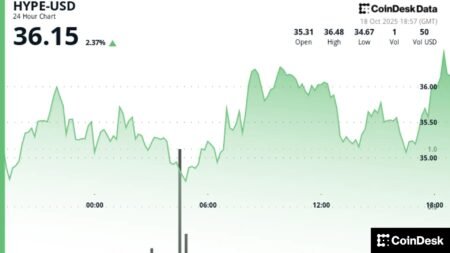Institutional Shift in Bitcoin: From Passive Investment to Yield Generation
As institutional interest in Bitcoin evolves, many asset managers and corporate treasuries are moving beyond viewing the cryptocurrency merely as "digital gold." There’s an increasing trend toward utilizing Bitcoin as a yield-generating asset, facilitated by emerging platforms like Rootstock and Babylon. Richard Green, Director of Rootstock Institutional, indicates that companies and investors holding Bitcoin desire more than just asset appreciation; they want their holdings to actively generate yield. This focus on transforming Bitcoin from a passive store of value to a productive asset occurs as stakeholders reconsider their investment strategies amid the rapidly changing landscape of digital finance.
The Shift in Mindset Among Institutional Investors
Historically, Bitcoin was primarily regarded by institutions as a hedge against inflation or a digital store of value. However, this perspective is changing. According to Green, the current narrative among professional investors now emphasizes the necessity for their assets to work diligently within their specified risk tolerance. Unlike traditional investments, where passive appreciation was deemed sufficient, the expectations for Bitcoin now mirror those existing in other digital asset ecosystems like Ethereum and Solana, which are proven yield-driven networks. This shift signifies a new era where Bitcoin’s profitability potential is prioritized alongside its value-preserving attributes.
Yield Generation Solutions Built on Bitcoin
Innovative Bitcoin-native solutions are paving the way for yield generation without deviating from the Bitcoin network. Rootstock, for instance, has gained traction due to its ability to enable smart contracts secured by Bitcoin’s powerful hash rate. Institutional demand has surged for collateralized products and tokenized funds that generate Bitcoin-denominated returns. Green emphasizes the critical role of Rootstock in guiding institutions seeking to unlock liquidity and yield from Bitcoin, introducing services like BTC-backed stablecoins and credit structures designed to minimize risks while enhancing returns.
The Practicalities for Corporate Treasuries
For many corporate treasuries, utilizing Bitcoin goes beyond ideology; it is also a matter of practicality. As mentioned by Green, companies holding Bitcoin face a dilemma: they incur a 10-50 basis points cost in custody, necessitating strategies to offset this "custody drag." The rise of secure, reliable options allows firms to generate yields without resorting to complex DeFi strategies that might exacerbate their risk. Consequently, some Bitcoin-denominated yield opportunities offering modest yearly returns of 1-2% are increasingly attractive, particularly to conservative investors looking for straightforward alternatives.
The Yield Problem: Comparisons with Ethereum
Despite these advancements, yield generation through Bitcoin still lags behind the vibrant staking ecosystem of Ethereum. Andrew Gibb, CEO of Twinstake, points out that although Bitcoin staking technologies are in place, the resulting returns often remain meager. This poses a psychological challenge for holders of Bitcoin, who may not be inclined to lock up their assets for an additional 1% yield. Some services aim to mitigate this concern by offering yield generation via mechanisms like time-locking, allowing holders to retain ownership while temporarily locking up their Bitcoin for yield generation. Nonetheless, for wider institutional adoption, the yield needs to be substantial enough to justify this commitment.
The Path Ahead for Bitcoin’s Institutional Adoption
As Bitcoin-native yield products proliferate, it appears that institutional holders of Bitcoin are increasingly unsatisfied with passive appreciation alone. The broader cryptocurrency environment is evolving, and investors now expect more transparency and productivity from their Bitcoin holdings. Richard Green suggests that the objective is not merely to hold Bitcoin but to create a landscape where Bitcoin yields are visible and verifiable. The ultimate goal remains clear: enhance the productivity of Bitcoin while respecting the essential principles of self-custody.
In summary, institutional interest in Bitcoin is pivoting from a passive investment strategy to dynamic yield generation opportunities, facilitated by innovative platforms and technologies. As the industry navigates the balance between risk and reward, the future of Bitcoin at the institutional level promises to bring significant changes, underscoring the cryptocurrency’s increasing relevance in modern financial landscapes.

















